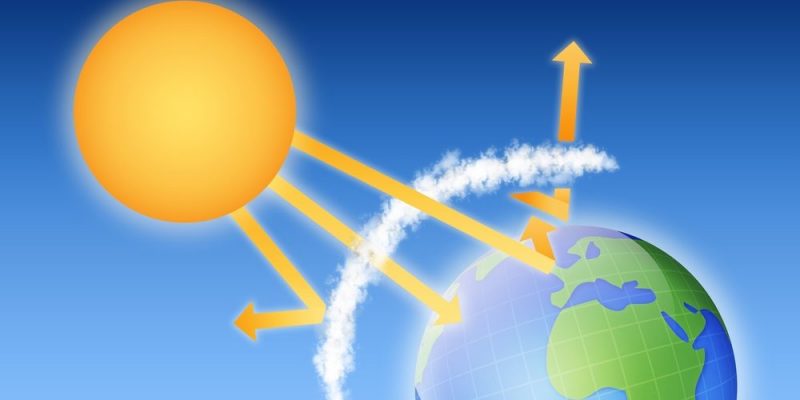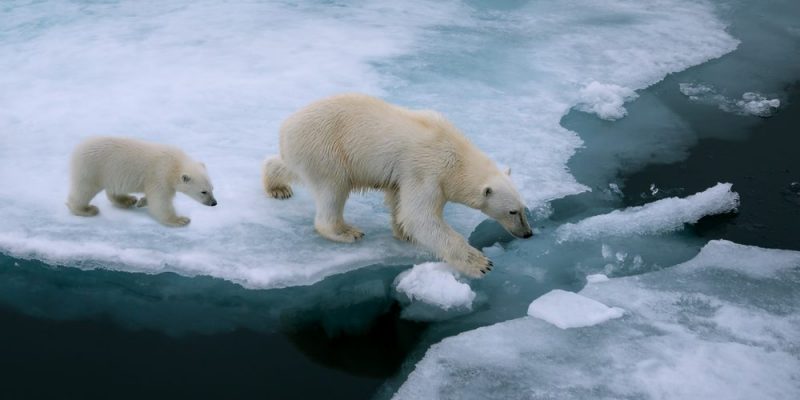We explain what the greenhouse effect is and the causes of this phenomenon. Its consequences and relationship with global warming.

What is the Greenhouse Effect?
It is known as greenhouse effect an atmospheric phenomenon that occurs when thermal radiation (heat) from the Earth's surface, which is commonly emitted into space, is instead retained by greenhouse gases (GHG) present in the atmosphere due to the air pollution. This causes an increase in planetary temperature, since the heat cannot escape, as in a greenhouse. That's where the name of the effect comes from.
The sunlight that our planet receives daily heats its surface, including the ocean waters, providing it with an enormous amount of light and heat that allows life and injects the energy necessary for its different chemical and physical cycles.
However, some of that heat energy is reradiated outward at lower frequencies (infrared radiation), allowing some margin for cooling and balance.
This process is interrupted or reduced when gases such as water vapor, carbon dioxide (CO2), methane (CH4), nitrogen oxides (NxOy) and ozone (O3) abound in the atmosphere, known as gases. greenhouse effect. If there were none of these gases in the atmosphere, the average temperature of the planet would be -18 °C and life would be impossible.
On the other hand, if these gases exceed the natural extent of their presence in the atmosphere, the heat accumulated on the planet will rise and alter the planet's climate balance, accelerating or intensifying global warming.
See also: Renewable energies
Causes of the greenhouse effect

The recorded levels of greenhouse gases in the atmosphere at the end of the 20th century are directly related to the beginning of human industrial activities, which have released so many gases of this nature into the atmosphere that The concentration rate of CO2 in the atmosphere has increased by 40% since 1750 (from 280ppm to 400ppm).
The addition of carbon to the atmosphere by our species exceeds the planet's current capabilities to recycle it (through the Carbon Cycle), since it comes from almost three centuries of massive combustion of fossil hydrocarbons (coal, oil, natural gas) and other similar economic activities, such as massive livestock farming or deforestation (which reduces the amount of plant life available to recycle environmental CO2).
It must also be considered that many of the gases thrown into the atmosphere by human industry are long-lived that is, they are not easy or quick to decompose to recover the chemical balance of the atmosphere.
Consequences of the greenhouse effect

As mentioned before, the greenhouse effect It is necessary for life on the planet, since without it heat would be released into space. The problem is, instead, the disproportionate increase in the gases responsible for this effect, which has a direct consequence: the gradual but sustained increase in global temperature. This is known as global warming and has a series of consequences:
- Climate change Rising global temperatures lead to altered hydrological and tidal cycles, disrupting the way our planet distributes heat and cools itself. Thus, climates are converted into extreme versions of themselves: longer and harsher winters, more oppressive and drier summers. When it rains, it floods; when not, there is drought.
- Melting of the poles The ice caps at the poles serve as a natural refrigerator for the planet, and also preserve a significant percentage of fresh water in a solid state. The increase in temperature gradually reduces them, thus generating an acceleration in warming, since there is less ice to counteract it and so on. This, furthermore, implies that the level of the seas will rise: the fresh water will raise the coastline of the continents and many cities may remain under water.
- Generation of new deserts Such violent climate change does not give life a chance to adapt to the new temperature conditions, which leads to the generation of new deserts or the lengthening of existing ones.
- Climate catastrophes Longer and more intense hurricane seasons, tropical storms with more rain than usual and other similar phenomena are a consequence of the global climate imbalance.
Greenhouse effect and global warming
The link between the prolonged emission of greenhouse gases and global warming is proven by scientists, despite the fact that there was much disbelief and much debate around it.
Some sectors, especially those that would have to make the greatest efforts to reduce CO2 emissions into the atmosphere (the industrial sectors of the most developed countries, precisely), insisted that it was a natural warming cycle product of the end of an ice age.
And although this is still true in terms of geological time, neither does it mean that the increase in the level of greenhouse gases in the atmosphere has rebounded and accelerated enormously since the Industrial Revolution of the 18th century.





